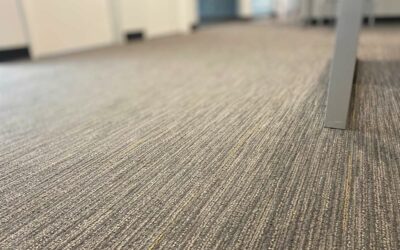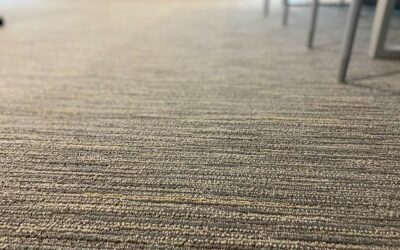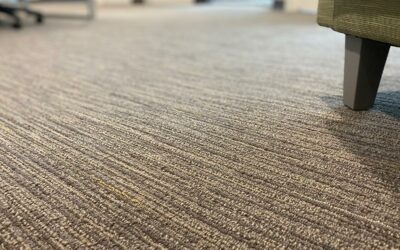Daily Cleaning Routine for Hardwood Floors: Best Practices and Essential Tools
Hardwood Floor Cleaning Best Practices
Just as you might run your car through a carwash or routinely wipe a rag across your countertops, there are maintenance and prevention techniques for hardwood floors to make sure they prove to be a worthy investment!
Accidents happen. Things get spilled or dropped. Our beloved pets forget their routines. Life sometimes gets messy and in certain instances, hardwood floors can show that. At Lakeside Floor Coverings, we appreciate the value of hardwood floors and we want them to perform in your house well into the future.
Keep reading to get access to insider tips and tricks that will help you keep your wood floors in prime condition for years and years to come!
Scratches and Damage: Tips for Protecting Your Hardwood Floors
Hardwood floors are known for their luxurious looks, durability, and lengthy longevity – if you’ve made the choice to enjoy them in your space, do yourself a favor by keeping them in top shape by following some tried and true wood floor maintenance and care methods.
There are many things you can do on the front end to avoid unintentional damage to your wood floors. One of the best practices is to be proactive and to do so, read about the following actions you can do to ensure your hardwood floors stand up to your expectations.
Furniture Placement and Wood Floor Protection
If you are new to purchasing furniture, you might be surprised to know that there are floor-friendly furniture features on the market that you can use to your advantage. Things like felt pads can be attached to the bottom of furniture legs to avoid denting and scratches.
Popular in interior design right now is antique furniture that has rolling casters. Although these are chalked full of character, we do advise against them because they are considered an enemy to hardwood floors!
Do not drag any furniture across your hardwood floors. This is a death wish when it comes to hardwood floor care. Instead, take the time and effort to lift and carry your furniture because it will pay off in the long run by avoiding preventable dents and dings.
Entryway Protection
We recommend the use of doormats and rugs at entrances and other highly-trafficked areas. Be mindful of regularly cleaning these rugs so as to rid them of any dirt, dust, or other hidden and potentially dangerous debris.
Rug pads are great for grip and cushioning but avoid any rubber-backed mats. Those too are an enemy to hardwood floors because the rubber traps water. It’s also highly advised that you consider a no-shoe policy.
Pet considerations
If you have pets that roam around your house, commit to regular trimming of their nails because if they are too long, their nails will undoubtedly scratch your floors. Also, consider decorating with pet-friendly rugs or beds in hardwood floor areas that your pet might frequent. And if accidents happen, clean them up immediately!
Regular Wood Floor Care
Daily sweeping is your number one combater to prevent damaging build-up from accumulating on your hardwood floors. This build-up can eventually act like sandpaper on your floors when the tiny particles get dragged across your hardwood.
If you can’t commit to daily sweeping, then settle for once a week because even that schedule will help fight against scratching and denting as well as give you clean hardwood floors.
It’s advised to recoat your wood floors regularly to take care of scuffs and wear patterns that can add up over the years. Catch it before it happens! Be proactive. Consider using UV-blocking window treatments in rooms with lots of sun exposure. Speaking of sun exposure, it’s a good idea to rotate any area rugs in rooms with high sun exposure in order to ensure even aging of your hardwood floors.
To disguise blemishes, don’t be afraid to use a stain marker (from something like a wood furniture touch-up kit) or a wax stick for deeper dents. For areas that might have more intense damage, select a stain to match your floors. Buff the scuffs with fine-grit sandpaper. Apply a small amount of stain with a clean cloth and wipe it away. Consider using a brush and a small amount of polyurethane to give some more shine.
You can expect that you might have to refinish your hardwood floors if your floors have shown that the time has come. This involves removing all finishes, repairing any damaged wood, and then applying fresh coats of finish. For big spills or areas of great concern, consult a specialist!
Get in touch with our team to discover your floor covering and installation options. We’re looking forward to working with you.
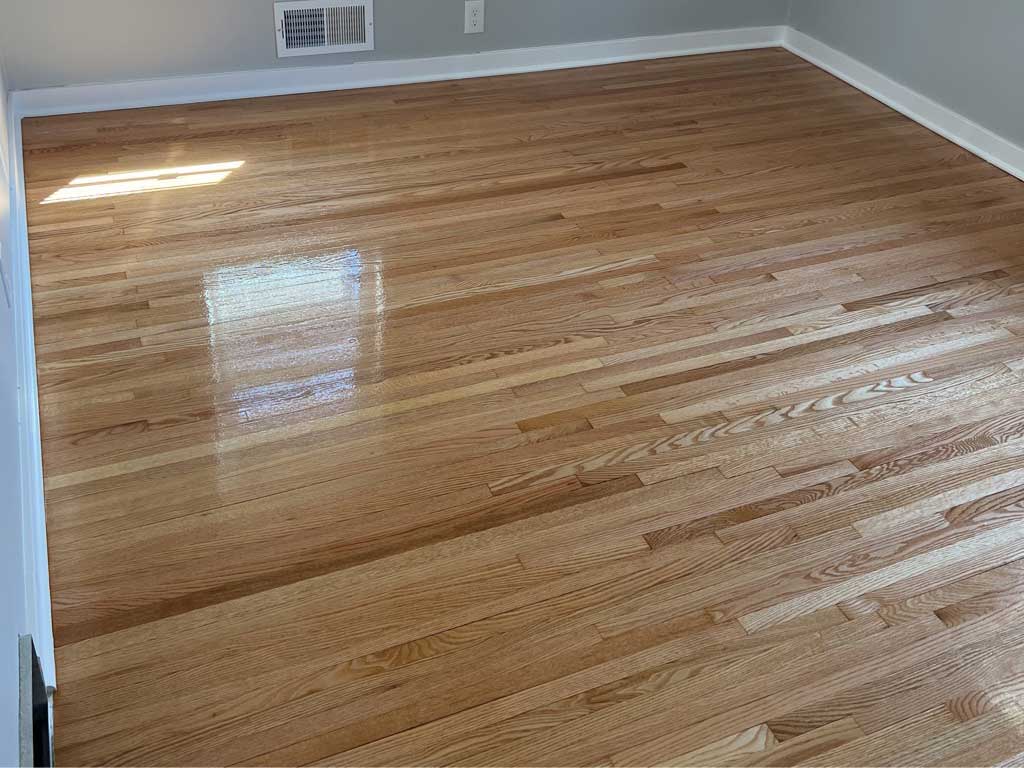
Choosing the Right Cleaning Products for Hardwood Floors: What to Use and Avoid
Be an educated owner of hardwood floors! When it comes to the maintenance and care of your hardwood floors, it’s vital to know what kind of floor finish you have, whether that be a surface finish or a penetrating finish.
Surface finish: This type of finish includes urethane and polyurethane products that form a protective barrier. Spills and other liquids will pool but not penetrate the surface. Therefore, it’s okay to use water and water-based cleaning products.
Penetrating finish: Examples of this type of finish include linseed or tung oil. These finishes soak through the surface of your hardwood floor and then they’re topped with a wax coat. These finishes absorb water so be careful to only use solvent-based cleaning products.
An easy tip to follow to figure out what kind of finish you likely have is to find a hidden area of your hardwood floors. Run a sharp knife blade over the surface to scrape off a tiny amount of the finish. If the material you get is clear, it’s probably a surface finish. You likely have a penetrating finish if you get more of a smudge with no clear material when you look at the scraping remnants.
No matter the type of finish you have, you can follow the same general type of cleaning regime. We say general because there are some disclaimers to be aware of. Read on to know more!
Regular dusting, mopping, sweeping & vacuuming
– Dry mop, dust mop, sweep, and/or vacuum at least once a week to get the small dust particles off the floor.
– We suggest using a large, flat-head mop with a microfiber cloth pad or other mop pad – something like a Swiffer.
– If you prefer a broom, use one with synthetic fiber ends.
– If vacuuming is more your thing, use a floor-brush attachment and avoid using the beater bar because it can dent the wood.
– Pay extra attention to where adjacent floorboards meet to uncover discreet nuisances.
Cleaning solvents and solutions
– There’s no one-size-fits-all hardwood floor cleaning solution because of the different finishes that are on the market.
– Use a floor cleaner specific to hardwood floors. Read the label to ensure the cleaner is good for wood floors. Always test a new cleaner in an inconspicuous area first. If there are any doubts, contact your flooring professional of the flooring manufacturer.
– Avoid products that say they’ll shine, polish, or rejuvenate your wooden floor. They might work for the short term but be cautious. These type of products leave an unwanted residue on your floors which cause premature deterioration of your floor’s protective finish.
– Avoid bleach or any other harsh chemicals because it will inevitably create hazing, among other issues.
– Do not use a steam mop or other things like a steam cleaner!
– Seek professional care if necessary.
Get in touch with our team to discover your floor covering and installation options. We’re looking forward to working with you.
Dealing with Spills and Stains on Hardwood Floors: Quick and Effective Solutions
Of great significance to the hardwood floor care routine is this simple idea: no spill is too small to clean up! If you see it, clean it!
Keep reading to see how we break down the biggest contenders when it comes to the types of spills and stains we see commonly infecting hardwood floors.
Issue: Caked-on food stains
Use a plastic knife to ever-so-softly chisel under the lower edge of the stain/spill. Gently slide that knife under the area and lift upward. Be careful while doing this – you can easily scratch, indent and/or remove some flooring finish if this isn’t done properly.
Then use a slightly dampened clean cloth to rub the scraped spot. Go at it a second time with the gentle chisel process.
Side note for penetrating finishes: if a small section gets chipped away from the knife technique, add a small amount of hardwood floor wax to take care of the stripped area.
Issue: Wax and gum
Wax, gum, or crayon marks can be removed with ice. Fill up a Ziploc freezer bag with ice and put it over the area until you can tell it’s becoming breakable. Then use a plastic spatula to scrape off the stain.
Issue: Water, ink, and pet stains
Deep clean with a quality hardwood floor cleaner suitable for your hardwood floor finish.
– Surface finish: use any pH-neutral, wax-free, and petroleum-free cleaner or a homemade solution of ¼ cup of dish soap and one gallon of warm water.
– Penetrating finish: strip away soiled old wax with mineral spirits and reapply a fresh coat. In these cases, it’s best to seek professional assistance.
Issue: Hazing
Use a microfiber cloth (or a standard clean cloth) dipped in warm water. In small sections, use circular motions to remove the haze. Be mindful that haze is typically caused by products applied to the floor. It may take many cleanings over a period of time to remove the built up residue left from the use of an improper product.
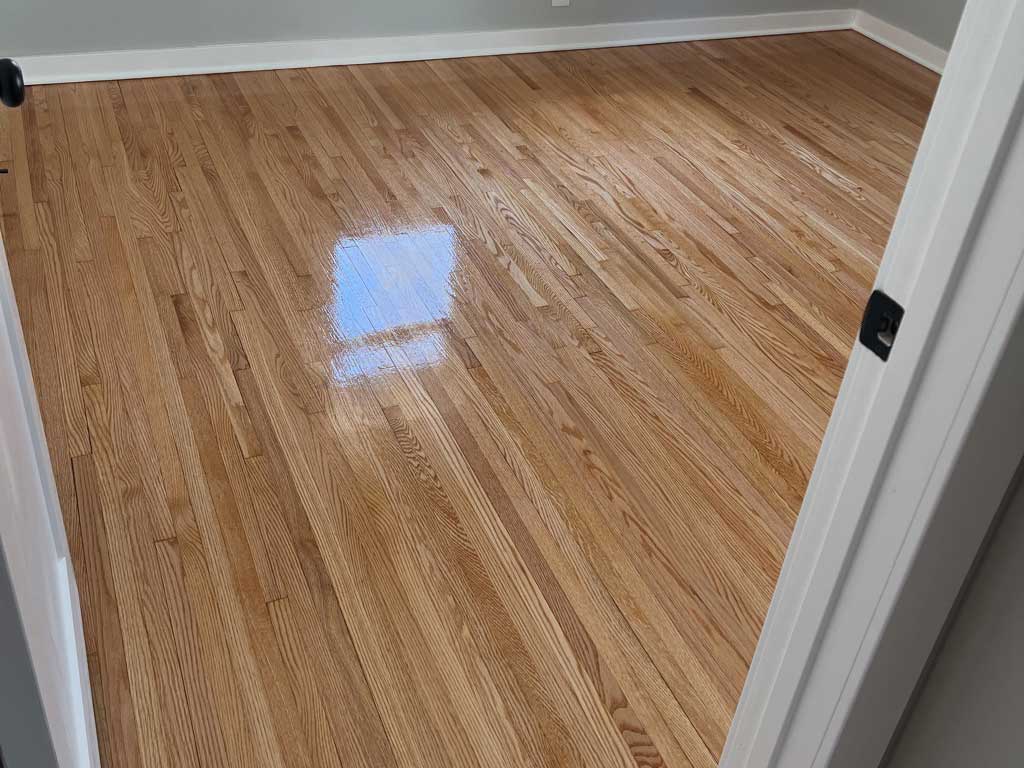
Seasonal Maintenance for Hardwood Floors: Tips for Handling Temperature and Humidity Changes
It’s been said that water is wood’s worst enemy! Why? Because wood reacts to its natural environment, including humidity and other sources of water. Hardwood floors are also extremely reactive to temperature!
Given this information, we suggest maintaining your indoor relative humidity level between 35% and 55% throughout the year. This will help to minimize the natural expansion and contraction of wood.
Dry Climates
Dry conditions can lead to cracking, gapping, and splitting of the hardwood. In such conditions, you can add some moisture back into the area by considering the use of a humidifier.
Humidity
Conversely, humid areas are considered those environments regularly at or above 55%. In these conditions, we suggest the use of a dehumidifier. Pay attention to any cupping which has a tendency to occur in areas with lots of moisture.
Snow & Ice
If you live in a geographical area with snow or ice, you must be very aware of salt migrating onto your hardwood floors! It’s important to use exterior mats that can catch the salt from your boots that can otherwise be accidentally traipsed into the house. We repeat: de-icing salt can seriously damage your floors!
Accidental Water Leaks
Areas with sudden and large amounts of water from leaky pipes, dishwasher malfunctions, etc should be immediately tended to. Consider the use of a wet/dry vac to clean up the area. Watch out for mold and mildew that might develop as this will require you to replace the floor. In such cases, seeking professional help can be worth it in order to get a moisture meter reading.
Conclusion – Daily Cleaning Routine for Hardwood Floors: Best Practices and Essential Tools
There you have it! A detailed list of how you can care for and maintain the beauty of your hardwood floors!
At Lakeside Floor Coverings, we know hardwood floors can be an investment. We want to make sure that you are happy with the condition of your floors for the long haul so we encourage you to commit to some regular cleaning and maintenance routines.
And remember, if you can see it, clean it!
Get in touch to get started on your flooring project. Our friendly staff can arrange a time for you to visit our showroom or for our professional team to visit your home or commercial property for an on-site estimate. Call 763-503-0100.
Best Cleaning Practices for Hardwood Floors FAQs
Should wood floors be cleaned daily?
To keep the finish bright and clean, wood floors should be swept, vacuumed, or dust mopped daily, and you should clean up spills as soon as they happen. You should do a more thorough floor cleaning weekly or monthly, depending on how much use the floors get.
How often should hardwood floors be wet mopped?
Once a week, wood floors should be cleaned in high traffic areas with a damp mop. Low traffic areas can be done less frequently, like once a month or once a quarter. Unsealed wood floors are more susceptible to water, so make sure that the mop is just slightly damp.
What is the best way to clean hardwood floors
The best way to clean hardwood floors and keep them in shape is to stick to a regular schedule of maintenance. Sweep, dust or dry mop daily. Vacuum weekly. Clean heavy-traffic areas with a damp mop twice a month.
RELATED POSTS
How to Make High Traffic Carpet Look New
How to Make High Traffic Carpet Look NewThere’s some good news that comes along with tips on how to keep your...
Tips and Tricks for Carpet Cleaning in High-Traffic Areas
Carpet Cleaning High Traffic AreasWhen it comes to cleaning practices for traffic-friendly carpets, you must...
What Carpet is Best for High Traffic Areas?
Best Carpet for High Traffic AreasToday’s carpeting products greatly overshadow the carpeting of the past!...

